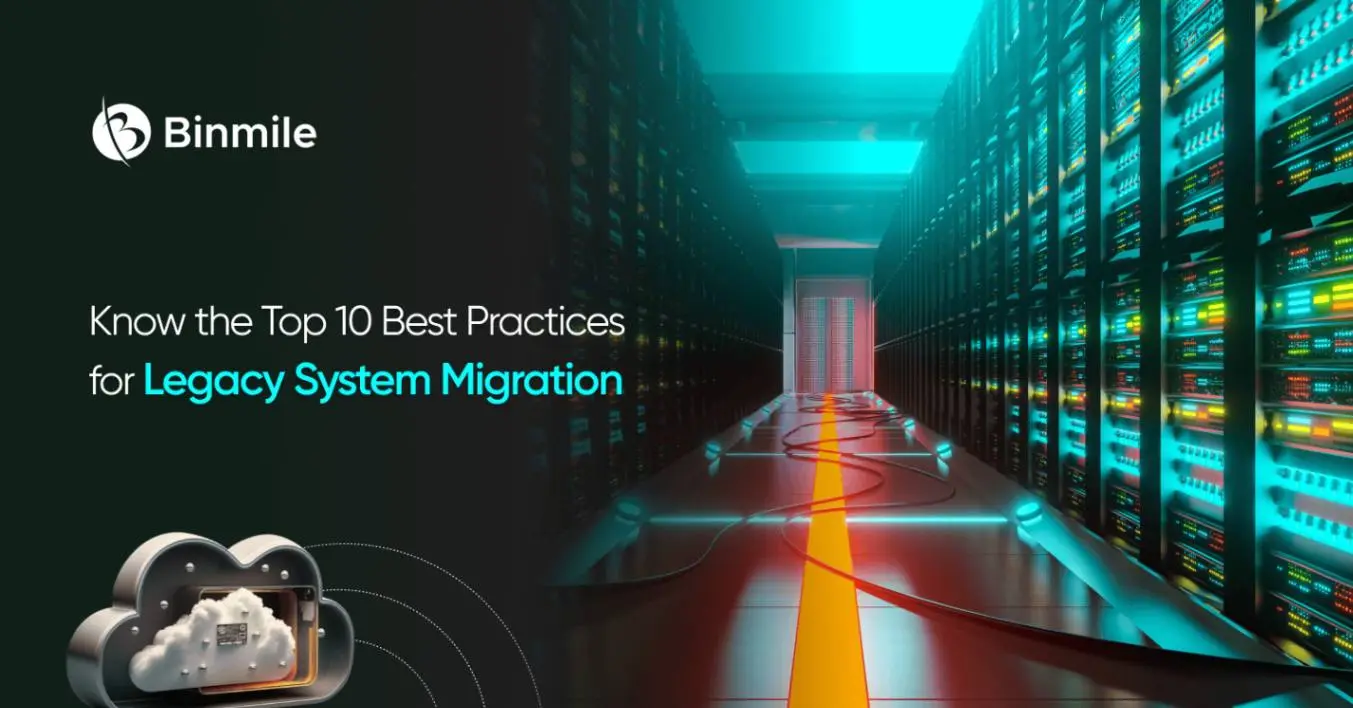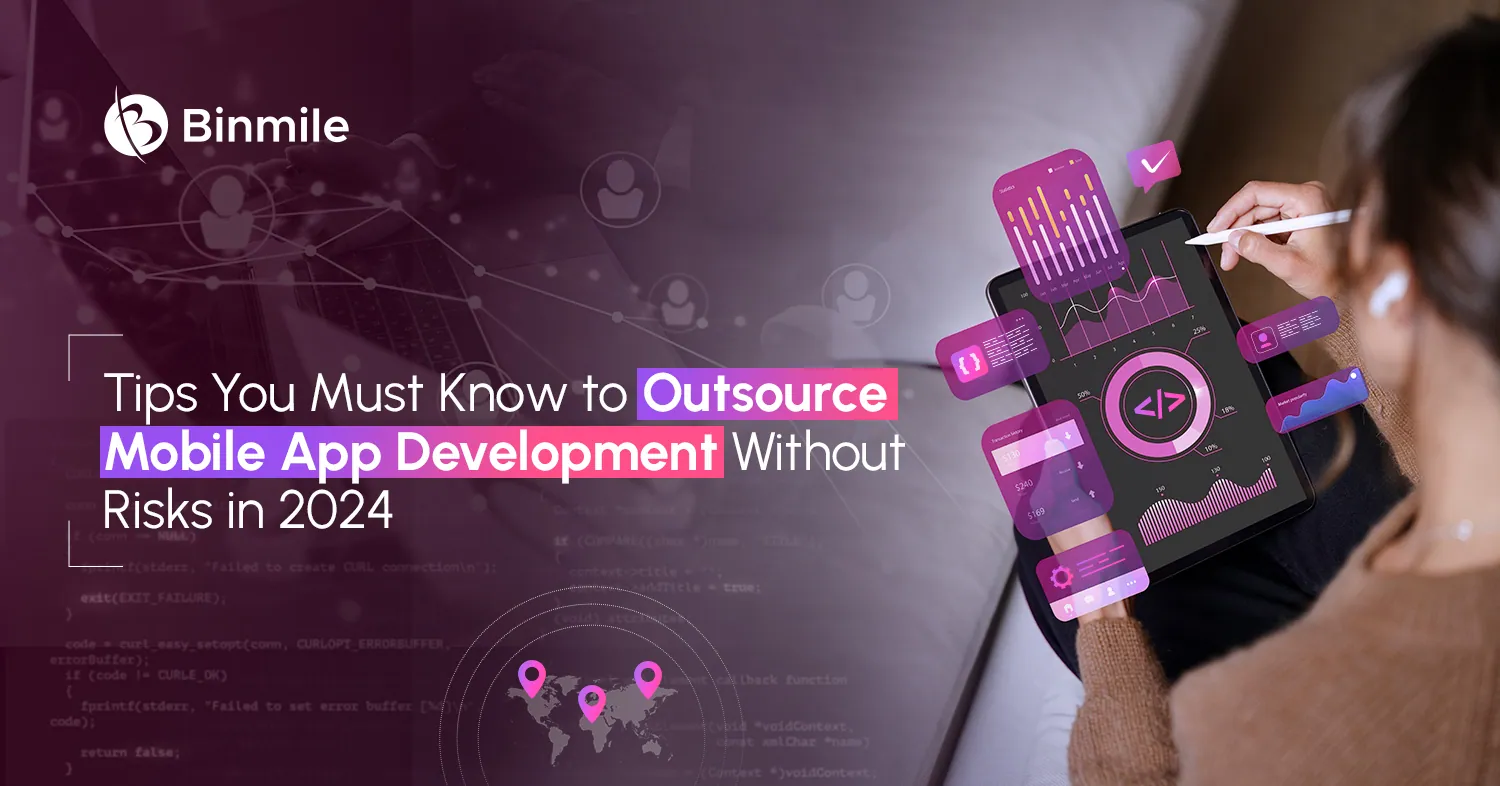Organizations that are seeking sustained growth and efficiency know the significance of adapting to and embracing change in their IT operations management. Among the myriad challenges that enterprises encounter in their pursuit of technological advancement, legacy system migration stands as a formidable undertaking. Legacy systems, once the bedrock of operational stability, can become bottlenecks to innovation and agility. The legacy system migration to more contemporary solutions is not merely a technical procedure but a strategic imperative. Since legacy applications, systems, or software can still operate within their functionality, they might create additional issues with data transfer, maintenance costs, integration with new software pieces, and many others.
The only solution is to initiate a legacy migration project.
However, without proper practices, knowledge, and insight, app modernization can become a roadblock to your digital transformation journey. Over 75% of legacy system modernization projects fail. If you want your legacy migration project to shine, you must optimize your legacy app modernization backend workflow for success. In this blog, we shall explore 10 best practices that will help you in leading a successful legacy system migration. We will also review the risks and challenges of application reengineering to guide your organization in embarking on this digital transformation journey.
Legacy System Migration Optimization: Know 10 Best Practices

Optimizing your backend workflow for an effective legacy system migration is not just a good strategy; it’s a necessity in today’s competitive landscape. Let us share some of the best practices that will enable you to reap the benefits that will position your business for success, ensuring a seamless experience for both your IT operations management team and end-users:
1. Clear Migration Objectives
Dive deep into your system’s architecture, identifying dependencies, understanding data structures, and documenting how it operates within your organization. Conducting a thorough assessment of your migration objectives is crucial to ensure that all stakeholders are on the same page. The insights gained from this assessment provide a solid foundation for an effective migration objective as everyone understands what you aim to achieve with the migration, it becomes easier to make informed decisions and allocate resources effectively.
2. Data Archiving and Purging Strategy
Identify which historical data can be archived in secondary storage systems or cloud storage, reducing the load on the new backend. Implement automated purging processes or utilize cloud migration tools to remove redundant or obsolete data, ensuring that only relevant data is migrated to the new system. This helps you to optimize the database structure by focusing on essential data, improving overall system performance, and simplifying data management in the long run.
3. Data Profiling and Cleansing
No doubt data is at the heart of most systems, so ensuring its quality is paramount. When you use data profiling tools, it can help you gain insights into the quality of your data and prepare you well to yield maximum quality and insights within a given dataset to make effective business growth decisions. Following this, invest time in data cleansing processes to rectify inconsistencies, remove duplicates, and ensure that your data is accurate and ready for migration.
4. Initiate Automated Testing and Validation
Perform test automation frameworks that can execute a battery of tests, including regression tests, performance tests, and security tests. This not only accelerates the testing phase but also ensures consistency and repeatability, reducing the potential for human error. Additionally, automated testing provides rapid feedback on code changes, allowing for quick identification and resolution of issues. This approach enhances the reliability of the migration process, ensuring that the new backend system operates seamlessly and reliably.
5. DevOps Integration for Continuous Improvement
Adopting DevOps services during migration allows for automated testing, deployment, and monitoring of the new backend system. It also encourages cross-functional teams to work together seamlessly, resulting in faster and more efficient migration processes. Continuous integration and continuous delivery (CI/CD) pipelines ensure that updates and improvements can be deployed with minimal disruption post-migration. With these two, you not only streamline the migration but also set the stage for ongoing enhancements and optimizations in your new backend environment.
6. Code Review and Simplified Coding Structure
A streamlined and simplified coding structure eases the transition to the new backend, making it more efficient and resilient in the long run. Prioritize comprehensive code reviews to identify redundant, deprecated, or overly complex sections of code. Aim to simplify the coding structure by refactoring where necessary, and adhering to modern coding standards and best practices. By doing so, you not only enhance the readability and maintainability of the code but also reduce the risk of introducing errors during migration.
7. Leverage Cloud Deployment for Scalability and Efficiency
By deploying in the cloud, you can easily adjust computing resources to match your backend system’s evolving needs, whether scaling up during peak periods or scaling down during quieter times. Cloud consulting services also offer a range of tools and services that can simplify data migration, security, and monitoring. This approach allows you to harness the flexibility of cloud computing to optimize your legacy system migration, reduce costs, and improve overall performance.
Also Read: Lower AWS Cloud Migration Cost
8. Continuous Monitoring and Security Focus
Implement real-time monitoring tools with predefined alerts for critical performance metrics and security measures to safeguard sensitive data. This approach enables you to maintain a proactive stance in addressing issues as they arise. Regular reviews of monitoring data provide insights into system health and performance trends, also ensuring that your migration process aligns with industry regulations and compliance requirements for robust security standards.
9. Documentation and Knowledge Transfer
Comprehensive documentation of migration processes, configurations, and changes made is invaluable. Equally important is knowledge transfer to your team, ensuring that they can confidently navigate and maintain the new backend. Holding training sessions and creating user-friendly manuals are effective ways to empower your team.
10. Post-migration Optimization
Optimization doesn’t end with migration completion. Establish a routine for continuous optimization, regularly assessing the backend’s performance and configurations. Seek opportunities for efficiency improvements and align the system with evolving business needs to ensure long-term success. You can also seek IT operations management services for specialized modernization of your legacy systems.
Read More: Data Modernization Strategy for BFSI
Legacy System Migration: Common Challenges and Solutions
- Data Compatibility Issues: Legacy systems often use different data formats and structures compared to modern designs, making data migration complex. However, thorough data transformation strategies and the use of specialized tools such as data profiling and cleansing play a pivotal role in ensuring data quality and consistency during the migration process. If these compatibility issues are not addressed early on, they can lead to data-related disruptions and errors in the new system.
- Downtime and Disruptions: Extended periods of downtime can have a severe impact on business operations. To address this challenge, consider approaches such as phased migration, which allows for the gradual transition of components, minimizing downtime. Meticulous planning, including scheduling migration activities during off-peak hours, and extensive testing are key to reducing disruptions and ensuring a seamless migration experience.
- Resource Constraints: Many organizations face resource constraints when embarking on a legacy system migration. Limited IT resources or expertise can hinder the progress of migration projects. Seeking out application reengineering services can aid you in this. Proper resource allocation and prioritization are essential to make the most of available resources and ensure that the migration proceeds efficiently at no additional burden on your budget.
- Scope Creep: Scope creep, or the expansion of project scope beyond the initial plan, is a challenge that can lead to delays and budget overruns. Emphasize strict change control and scope management as it can lead to the risk of technical debt during migration or later stages. You can start by establishing a change management process that carefully evaluates and documents any alterations to the project scope can help prevent scope creep. Moreover, effective project governance and communication can also keep the project on track and within budget.
- Data Security Concerns: Security breaches or data leaks during application reengineering can have serious consequences. Businesses must adopt robust security measures, including encryption, access controls, and compliance checks, to safeguard data at every stage of migration. In addition, regular security audits and adherence to industry best practices are essential to ensure data security is not compromised during the migration process.
Keep Reading: Database for Web Apps
Launch Your Legacy System Migration With Confidence
The success of a legacy system migration hinges not only on the journey itself but on the enduring legacy it creates—the legacy of enhanced efficiency, adaptability, and competitiveness. To achieve a successful and seamless migration, businesses need well-optimized backend workflows that can significantly boost operational efficiency without disrupting your business. Migrating your entire legacy system can be a daunting task, especially if you have a shortage of resources in terms of budget or experts, but it doesn’t have to.
We discussed some of the best practices to optimize your migration process and also highlighted a few of the challenges that can occur during system migration, along with how to mitigate them. In addition, you can consult a team of legacy migration professionals who can assess your unique requirements and help you choose a fitting strategy for a smooth and successful migration.






